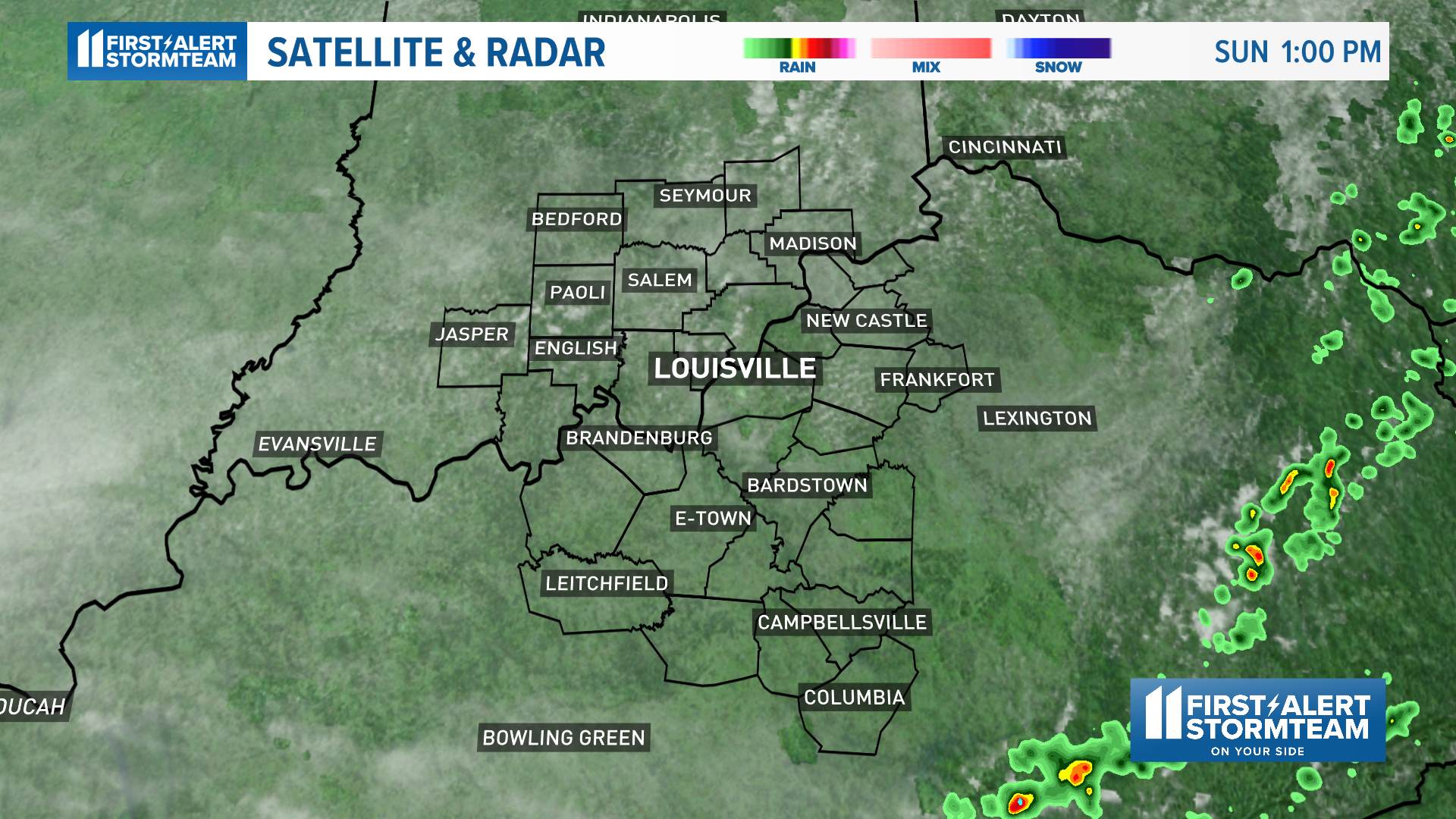Current Weather Conditions

Louisville weather radar – As we embark on a journey into the realm of Louisville’s current weather conditions, let us unveil the tapestry of meteorological elements that paint a vivid portrait of this vibrant city.
At the heart of this urban canvas, temperatures hover around 65 degrees Fahrenheit, a gentle embrace that invites exploration. Humidity weaves its silken threads through the air, reaching a moderate 55%, creating a palpable yet refreshing atmosphere.
Wind
From the west, a gentle breeze whispers secrets at a leisurely 10 miles per hour, carrying with it the promise of a day filled with movement and vitality.
Precipitation
The sky above Louisville remains unmarred by precipitation, allowing the sun to cast its golden rays upon the city, painting rooftops and streets with hues of warmth and vibrancy.
Radar Imagery: Louisville Weather Radar

Real-time radar imagery provides a valuable tool for tracking precipitation patterns and identifying weather systems. By analyzing the radar data, meteorologists can gain insights into the movement, intensity, and type of precipitation, enabling them to make informed forecasts and issue timely warnings.
The radar image for the Louisville, Kentucky area shows a complex mosaic of precipitation patterns. Several bands of showers and thunderstorms are moving through the region, bringing varying degrees of rainfall and lightning activity. The radar echoes indicate that the precipitation is widespread and likely to continue for the next few hours.
Precipitation Patterns, Louisville weather radar
The radar image reveals several distinct precipitation patterns:
- Linear bands of showers and thunderstorms: These bands are oriented in a north-south direction and are associated with a cold front that is moving through the area. The precipitation within these bands is typically moderate to heavy and can produce gusty winds and lightning.
- Isolated thunderstorms: In addition to the linear bands, there are also several isolated thunderstorms scattered throughout the region. These storms are typically smaller in size and may produce brief periods of heavy rain, hail, and lightning.
- Areas of light rain: Between the bands of showers and thunderstorms, there are areas of light rain or drizzle. This precipitation is associated with a warm front that is approaching the region.
Louisville’s weather is a symphony of ever-changing patterns, and to navigate its complexities, the louisville weather radar is an indispensable tool. Its intricate network of sensors paints a detailed portrait of the skies above, allowing us to anticipate the next chapter in Louisville’s meteorological narrative.
The Louisville weather radar, a beacon of meteorological information, constantly scans the skies for signs of impending storms. But when Hurricane Beryl emerged as a formidable force, many turned their attention to its whereabouts. Where is Beryl now? To answer this question, one can consult where is beryl now.
With its up-to-the-minute tracking, this resource provides a clear picture of the hurricane’s path, allowing the Louisville weather radar to focus on local conditions.